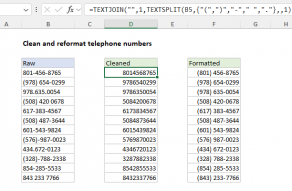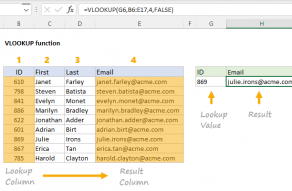Explanation
At the core, this formula uses an array operation to generate an array of letters from the input text, translates each letter individually to a number, then joins all numbers together again and returns the output as a string.
To parse the input string into an array or letters, we use MID, ROW, LEN and INDIRECT functions like this:
MID(B5,ROW(INDIRECT("1:"&LEN(B5))),1)
LEN returns the length of the input text, which is concatenated to "1:" and handed off to INDIRECT as text. INDIRECT evaluates the text as a row reference, and the ROW function returns an array of numbers to MID:
MID(B5,{1;2;3},1)
MID then extracts one character for at each starting position and we have:
=TEXTJOIN("",1,VLOOKUP(T(IF(1,{"a";"b";"c"})),xtable,2,0))
Essentially, we are asking VLOOKUP to find a match for "a", "b", and "c" at the same time. For obscure reasons, we need to "dereference" this array in a particular way using both the T and IF functions. After VLOOKUP runs, we have:
=TEXTJOIN("",1,{9;4;6})
and TEXTJOIN returns the string "946".
Output a number
To output a number as final result (instead of a string), add zero. The math operation will coerce the string into a number.
Sum numbers
To sum the numbers together instead of listing them, you can replace TEXTJOIN with SUM like this:
=SUM(VLOOKUP(T(IF(1,MID(B5,ROW(INDIRECT("1:"&LEN(B5))),1))),xtable,2,0))
Note: the TEXTJOIN function was introduced via the Office 365 subscription program in 2018.



















